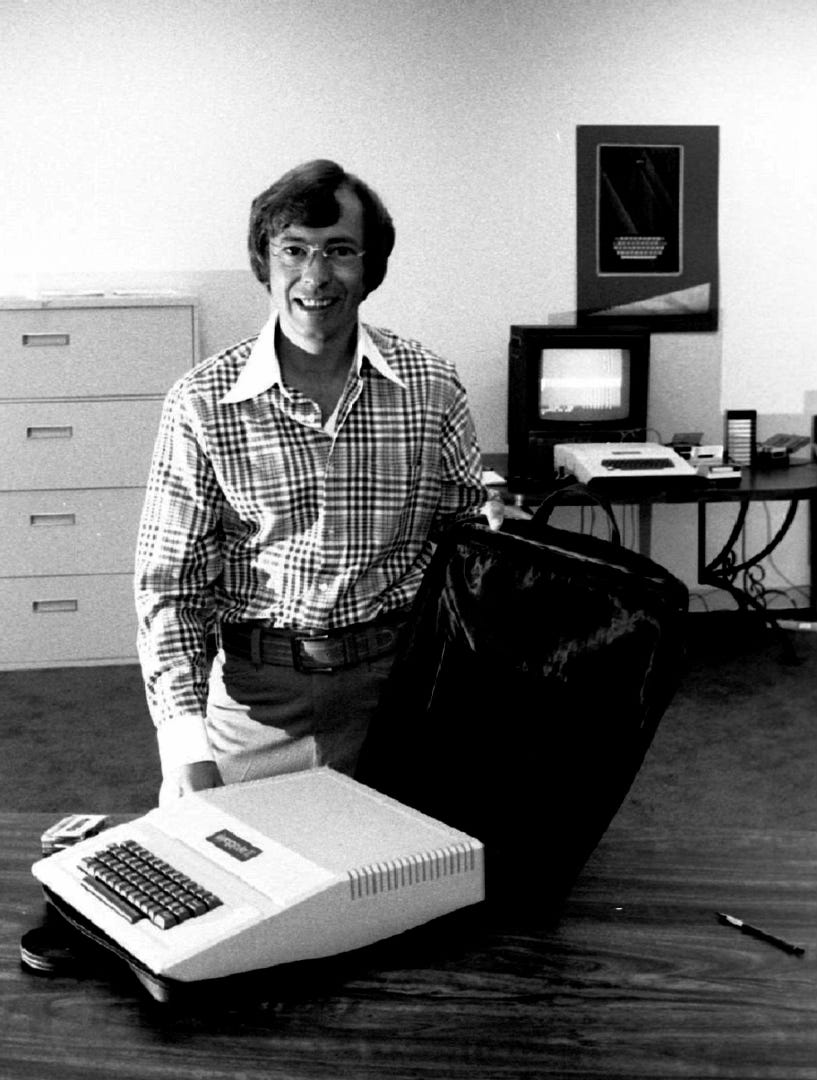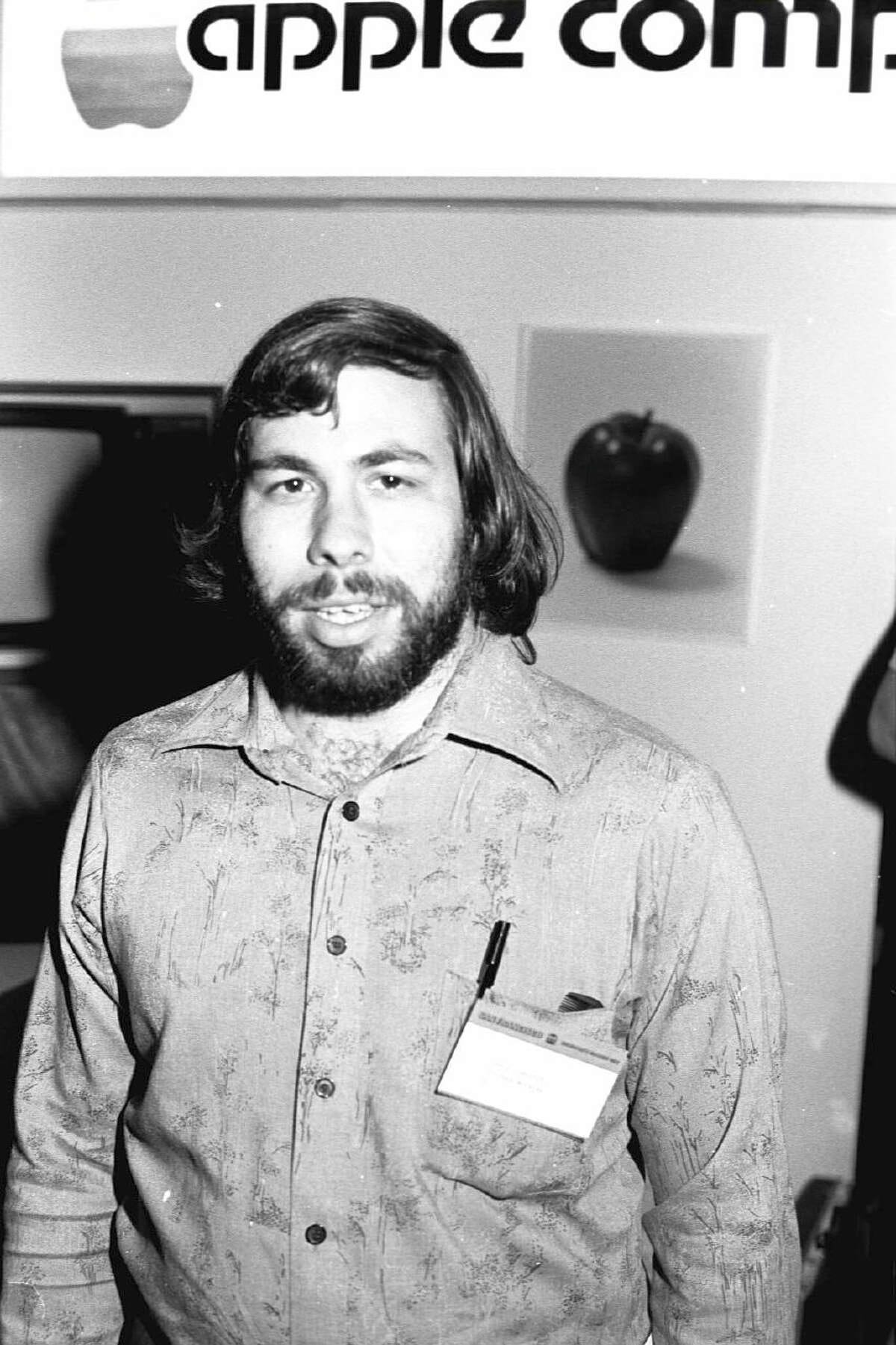“I want to put a ding in the universe.” - Steve Jobs
The world we live in today –– iPhones, Apple Watches, this MacBook I’m writing on
The reason so much of our computing products are beautiful now, in black, white and grey, made of aluminum instead of beige plastic is because of one person.
So much of our life now has the touch of Steve Jobs. Beyond all the stories of his brittle personality are the many impacts that he left on us, changing our society in a few ways that today we can’t imagine living without.
Apple is the ultimate startup story. Started with $2,000, rocket ship growth, crash and burn (almost), ego wars, and an unbelievable comeback. All this started in 1970s pre-Silicon Valley, when they still had hippies and HP and Intel ruled the world.
The first time I met Steve Jobs was in 1977, when I was working for NASA Ames Research in Mountain View. I was there for a summer internship in Physics and taking classes at Stanford at night. It was an idyllic time, the summer that STAR WARS came out; going to see that movie with a bunch of NASA guys was pretty cool, and living in Silicon Valley was like a dream come true for a So Cal kid in engineering school. (We didn’t really call it Silicon Valley back then. In LA we called it “up north’.)
One day my boss, who liked to tinker with electronics, was headed over to see a new startup company on Stevens Creek he’d heard about. It was two guys building a tabletop computer kit, something that you could build yourself and add a keyboard and screen. He asked if I wanted to come along. I answered “During work hours? Can we do that?” but he just laughed and said “We work for the government, we can do whatever we want.”
So we went over to Cupertino to see these guys, in a generic ugly brown and orange and beige office building, indistinguishable from hundreds of other buildings in that valley. They had a unit off the street, a bit hard to find in the maze of offices.
We walked right in the unlocked front door to see a vast open area, maybe 2,000 square feet, mostly empty and dark, with what I guessed was a makeshift assembly line of about ten tables put together in a line with computer parts all over them. There were two desks facing a wall near the front of the room, each with a phone and some stacks of paper. Posters of electronic parts were tacked to the walls. There was no other furniture, not a very welcoming place. I learned later that this coldness was common in Silicon Valley, even when companies had money in the bank. Frugality was more of a virtue in startups then.
There were two young guys about my age sitting at the desks, both had beards and long hair, the typical 70s California semi-hippie look, with long sleeved shirts and jeans. I felt that Northern Cal people just weren’t nearly as hip and cool as we were in LA; these nerds proved it to me once again.
At the time I had no idea what Apple was or who Steve Jobs was, or that I was looking at a successful company. Not too many people outside the world of hackers knew of Apple. In fact, a year before in 1976 he and Wozniak had formed the company with ~$2,000 they had raised by selling their prized possessions. For Jobs it was his VW bus. Steve Wozniak sold his Hewlett-Packard HP-65 calculator for $500. With these sacrifices, they had committed themselves to this venture, burned the boats.
Woz and I very much liked Bob Dylan's poetry, and we spent a lot of time thinking about a lot of that stuff. This was California. You could get LSD fresh made from Stanford. You could sleep on the beach at night with your girlfriend. California has a sense of experimentation and a sense of openness—openness to new possibilities.” - Steve Jobs, about the early days.
Their $2,000 had attracted an outside $90,000 investment plus a $250,000 loan from Mark Markkula, a Silicon Valley tech salesman in his 30s. By the time I met them, unknown to me, they already had over $200,000 in revenue. The shabby office, no employees and Wozniak’s humble personality and enthusiasm made me assume they were just starting.
“When I arrived at the garage, Woz was at the workbench and immediately began showing off the Apple II. I looked past the fact that both guys needed a haircut and was amazed at what I saw on that workbench. You can always get a haircut.”
- Mark Marrkula
One of them got up and came over to us, smiled and introduced himself; the other one just ignored us and kept reading his newspaper, the Mercury News. The friendly one turned out to be Steve Wozniak who immediately started showing around and telling us about their products and the plan to build in volume. The other guy of course turned out to be Jobs.
I wasn’t very impressed at first –– it was just a circuit board. But as Woz was showing us his amazing invention (see photo above), he became more animated and got me excited, too. I lost track of time and place as I listened to his explanation about how he came up with the idea of a simple, small, inexpensive computer. He was using the MOS Technology 6502 8-bit microprocessor that I had learned about in my EE class the semester before, so I felt an immediate kinship to him.
He had a dozen other innovations built into his machine, like his own operating system (AppleBASIC) that he personally built in the BASIC computer language called Apple BASIC, slots for RAM expansion, and the ability to use a normal TV as a monitor. He kept emphasizing how he reduced the chip count and board size to save money. He designed the system he wanted for himself.
Woz told me had set the retail price of the Apple I at $666.66 –– without knowing that this was the mark of the beast from the Bible. He said he just liked repeating numbers. I think he told that story a lot.
I didn’t realize at the time that I was talking to WOZ, someone who would become such a hero and legend to the engineering world, my world. He listened patiently as I discussed my breadboarding projects at school and things I was building at home with a Motorola 6800, like a pirate TV receiver. He patiently listened to me and told me to keep going.
“All the best things I did came from not having money and not having done them before.”
- Steve Wozniak
-“Creative things have to sell to be acknowledged as such.”
- Steve Wozniak
My boss was impressed with the commonality between Woz and me and just stood back and smiled, silently saying “I told you that you would love this place.” Woz gave us data sheet and photos of the Apple I (wish I’d saved those) and mentioned he was working on the next version, the Apple II.
When Jobs saw us spending so much time in front of the Apple I prototypes, he decided to bless us with his attention. He came over, did not introduce himself, and just started blurting about how NASA was a dead organization, a shadow of its former self. I thought, who’s this punk, the sales guy? Does he know anything about electronics? He’s kind of rude. If I’d known I was talking to THE Steve Jobs, I probably would have tried to say something to impress him.
Instead I said “In a way you’re right; it’s not what it was in the 1960s, when we all were in awe of NASA. But it’s still an amazing thing to be a part of. To me, an undergrad studying engineering, it’s a symbol of power. The literal power of rockets and the power of controlling space.” He just smiled at me and started walking away. We were only about 18 months apart in age, but at that moment he felt so much older than me. I felt the Steve Jobs vibe.
I wasn’t finished. “We’re working on sending astronauts to Mars right now, working on their spacesuit design.” I called after him. That stopped him in his tracks. He responded without turning around “We’re going to put a computer in every home in America, sooner then NASA gets to Mars.”
At that moment Steve Jobs’ vision has been validated, with $500,000 in sales in their first 14 months. I think he could see way into the future when everyone would have. He knew he was on his way to creating it; I saw it in his eyes.
Things happened fast. In the first partial year they had $175,000 in Apple I sales. They were selling circuit boards and peripherals, no complete systems with monitors or keyboards.
Apple's estimated annual revenues from 1976 to 1980:
1976: $175,000
1977: $774,000
1978: $7.9 million
1979: $47.9 million
1980: $117.9 million. IPO December 1980
By 1977 they were on their way to growing 400% and getting ready to launch an entirely new, faster, more complete design, the Apple II. In one year! It was a highly productive year. But nothing compared to the next 2 years, when growth was 900% to $8 million in 1978 and 600% to $48 million in 1979. By 1980 everybody knew who they were. Apple had their IPO in December 1980, putting the company valuation at $1.2 billion. By end of day the value was $1.8 billion. From zero to $2 billion in four years. That was a rocket ship. That was power.
By the time of Jobs’ death in late 2011, Apple had achieved a market value of $391 billion. Today the company is worth $3.5 trillion. People do have computer in their pocket, and a wristwatch that can monitor their heart health, and Pixar movies, and augmented reality, and Siri.
And NASA still hasn’t made it to Mars.










